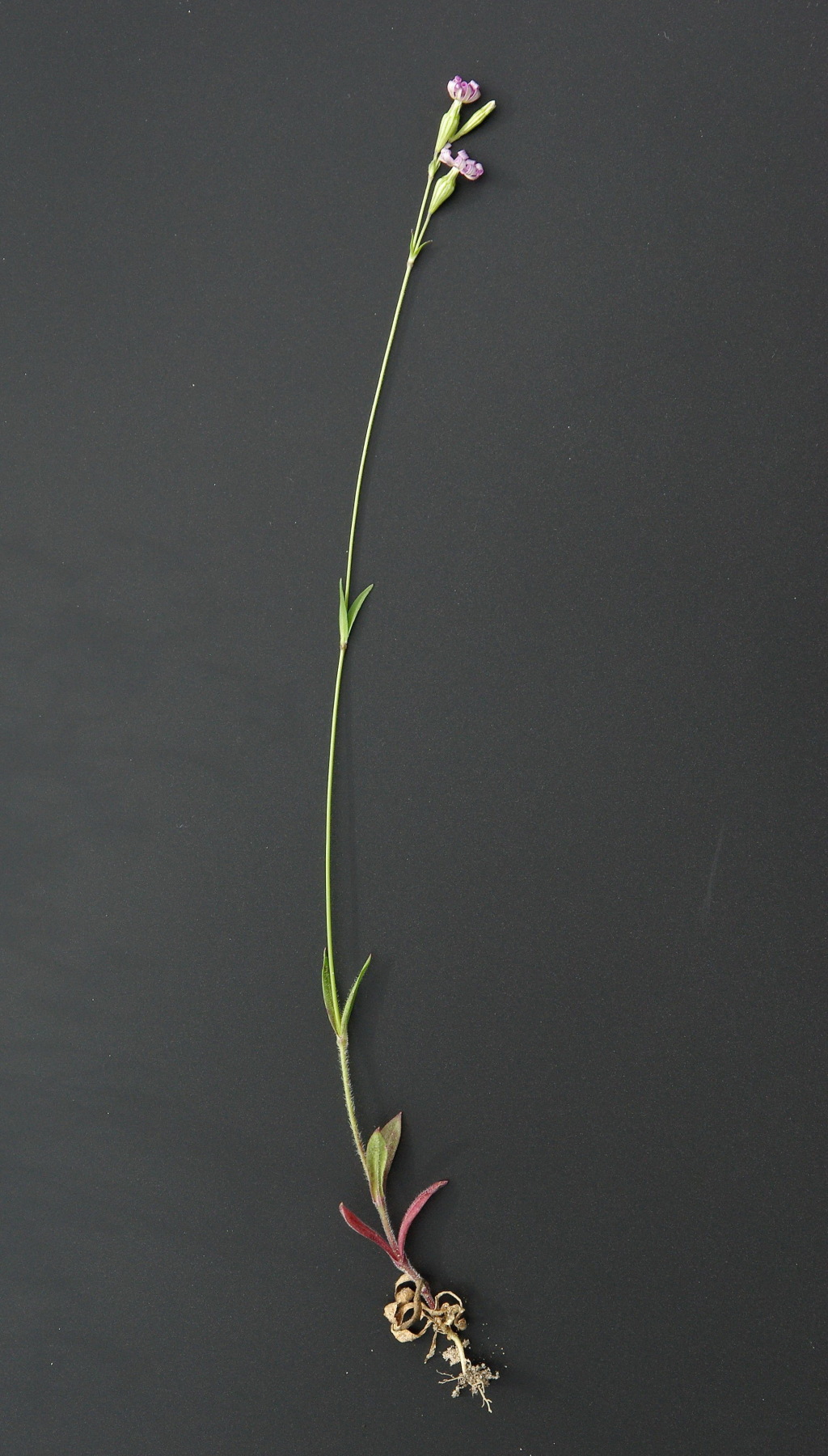Silene nocturna
L. Mediterranean CatchflyAnnual; glandular-pubescent. Stems erect, simple or branched, 10–60 cm high. Leaves appressed-pubescent, ciliate, 10–55 mm long, 3–12 mm wide; basal leaves with petioles to 10 mm long, obovate-spathulate; stem leaves sessile or subsessile, lanceolate-obtuse. Inflorescence simple or sparsely-branched, racemose, few–many-flowered; bracts herbaceous. Flower bisexual; pedicels 2–10 mm long; calyx narrow-ovoid, larger in fruit, 6–13 mm long, 10-veined, eglandular-hairy, veins green or purplish, reticulate, calyx-lobes triangular-acuminate; petal-limb c. 1.5 mm long, pink, bifid; styles 3. Capsule ovoid-cylindric, 5–9(–11) mm long; carpophore 1–1.5 mm long, more or less puberulent; seeds reniform, greyish-red, faces deeply concave, dorsal rim very broad, minutely asperate-tuberculate only in the shallow groove, blunt elsewhere, 0.7–0.8 mm long. Flowers spring.
LoM, MuM, Wim, GleP, VVP, MSB, RobP, MuF, GipP, OtP, WaP, Gold, CVU, GGr, EGU, HSF. Naturalized all States except Qld. Native to the Mediterranean region. A widespread weed in Australia, usually in drier areas.
Adams, L.G. (1996). Caryophyllaceae. In: Walsh, N.G.; Entwisle, T.J., Flora of Victoria Vol. 3, Dicotyledons Winteraceae to Myrtaceae, pp. 228–271. Inkata Press, Melbourne.
 Spinning
Spinning



